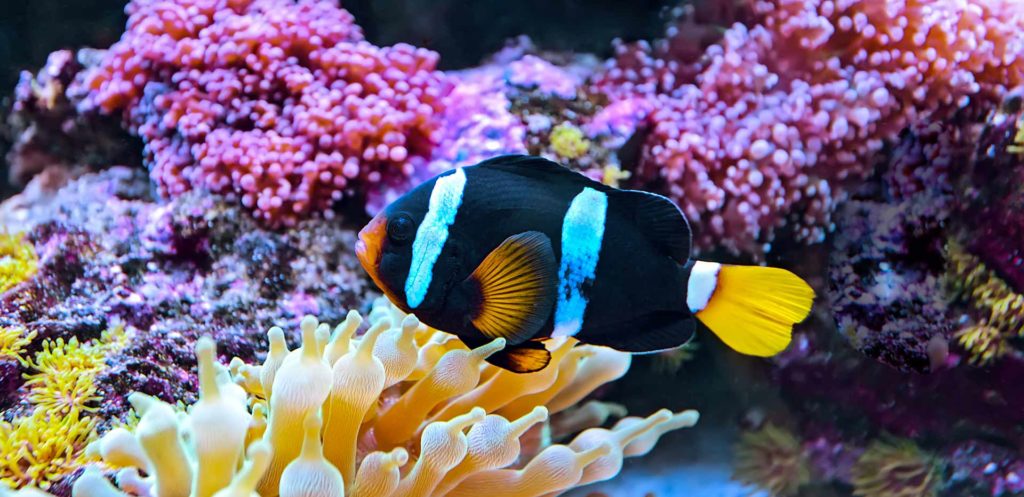
Kiunga Marine Reserve, Lamu
Kiunga Marine Reserve is part of the Lamu archipelago which is a cluster of hot, low-lying desert islands that run for some 60 km parallel to the coastline of northern Kenya. With its clear, warm waters and thriving reef, there are few places on the planet more idyllic for a day swimming, snorkelling and SCUBA diving.
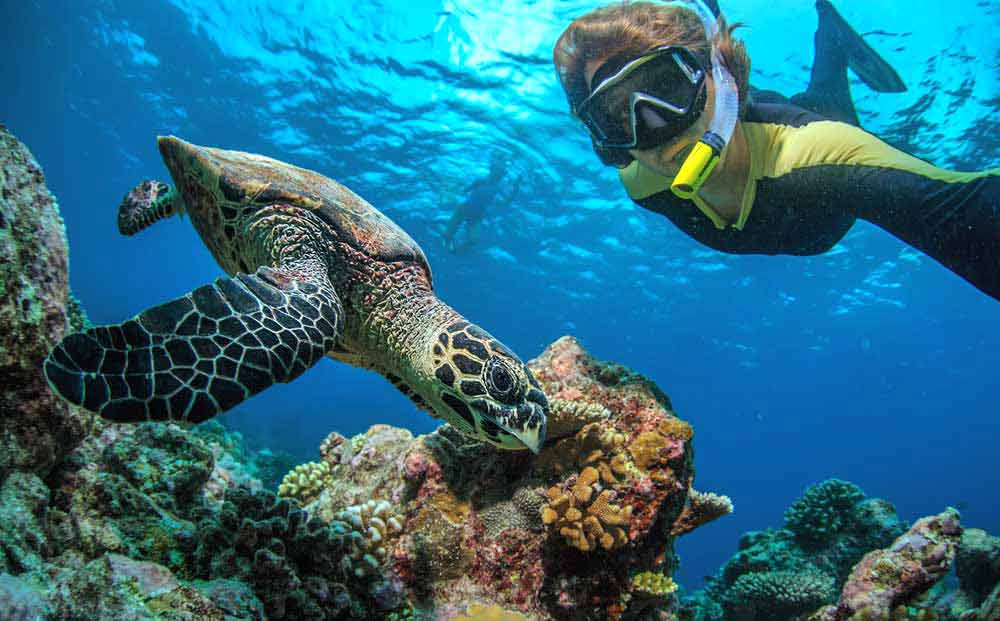
Kiunga Marine Reserve
A pristine string of rugged coral isles, ringed by rainbow coral reefs, Kiunga Marine Reserve offers living coral gardens, sculpted coves, wheeling seabirds, rare turtles, magical dugongs and an underwater world of unbelievable colour, discovery and vibrancy. The Reserve is just a dhow-ride away from the ancient and enchanting town of Lamu.
The historic Swahili town of Lamu
The oldest and best-preserved Swahili settlement in East Africa, Lamu is thought to have been founded in the 12th century and has been occupied continuously for over 700 years. Once a bustling Arab trading hub, dealing in ivory, rhino horn and slaves, today Lamu offers a unique showcase for traditional Swahili culture, a bustling historic town and some of the most pristine beaches in Africa. Lamu's Old Town is listed as a UNESCO World Heritage Site.
Coral islands and coral reefs
The 270 square kilometre Reserve is made up of a chain of 51 coral islands that lie some 2 km offshore, but inshore of the fringing reef. They run adjacent to the mainland’s Dodori and Boni National Reserves. Varying in size, the islands are composed of old, eroded coral. They shelter lesser kudu, bushbuck, monkey, porcupine and wild pig.
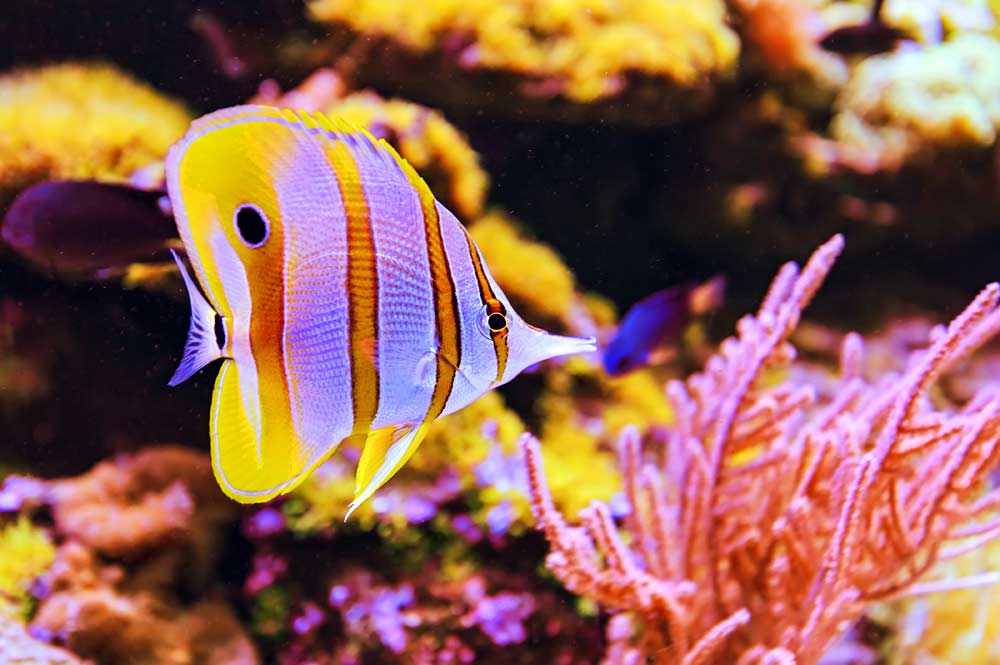
It is among Kiunga's coral reefs, however, where the real action is. Coral reefs are one of the most fascinating ecosystems on earth, sheltering nearly one million different types of marine life. They are made by battalions of tiny polyps, miniscule sea anemone-like creatures that live together in colonies. Some create a hard skeleton outside their bodies and it is this which eventually forms into stony coral. And coral comes in many shapes, size and colours. Varieties include the open-branched stag’s horn coral, the pincushion-like acropora coral and the wavy-branched and plate-like pavona coral. There is also the solid favia coral and the convoluted brain coral.
What to see
As well as the beautiful coral itself, the reef provides food and shelter for an entire community. A shifting rainbow of small fish, worms, shrimps, octopus and clams hide in the gaps. Blue and yellow parrot fish use their hard beaks to chew off lumps of coral. Snappers, rubberfish, zebrafish, butterflyfish and scorpionfish shimmer in the clear waters. Hunting sharks, rays, turtles (olive ridley and leatherback) and starfish prowl the reef in search of prey.
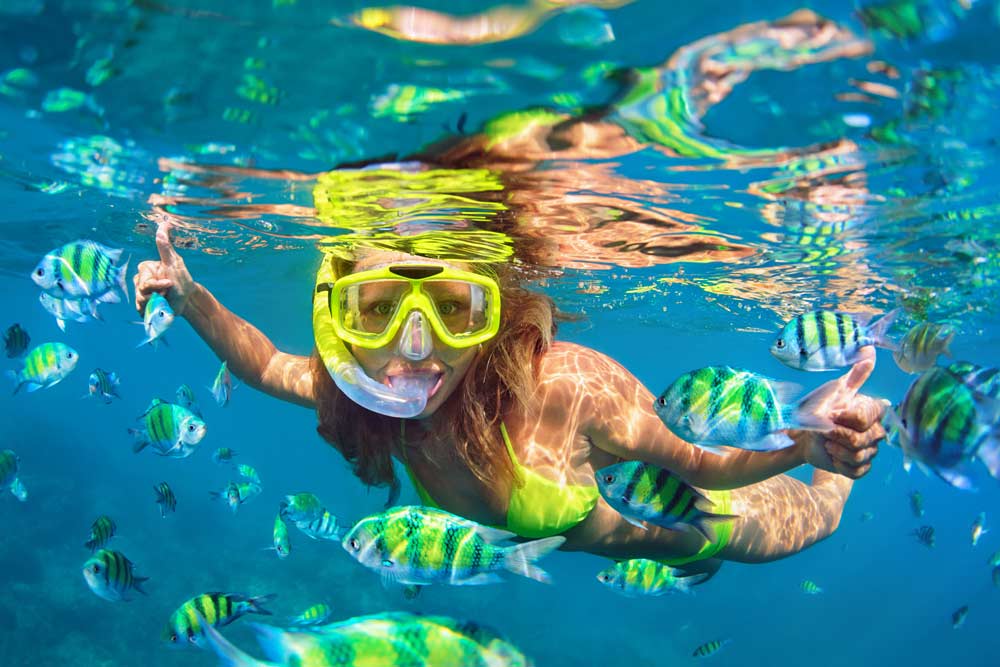
Fierce moray eels hide in holes while small crabs, wrasses (long, spiny-finned fish) and sharks lurk in the caves. Sea urchins, sea cucumbers, brittle stars and numerous species of mollusk feed on algae. And transparent prawns dance wraith-like through the waters alongside shifting clouds of tiny demoiselle fish.
Home to 'mermaids'
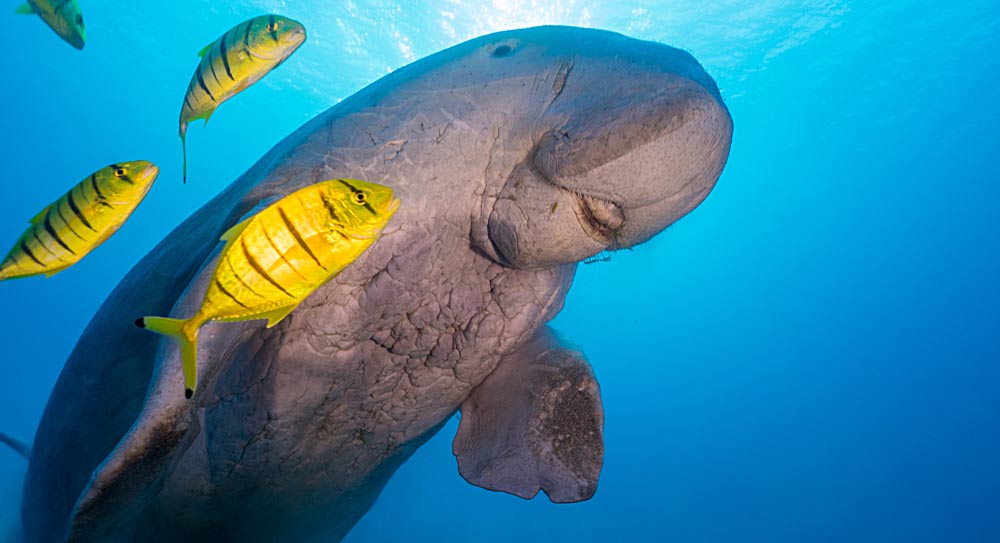
The Reserve’s creeks and inlets also serve as a substantial breeding ground for the rare mermaid-like creature called the dugong. A completely aquatic, warm-blooded mammal, the dugong belongs to the mammal order sirenia. This name comes from the ancient legends of Odysseus and the Sirens. Dugongs are thought to share a common ancestry with the elephant. They have an average length of 2.5 to 3.2 meters and may weigh anything from 140-170 kg. They live on the marine grasses growing in the shallower waters of the Reserve.
Snorkelling, diving and swimming
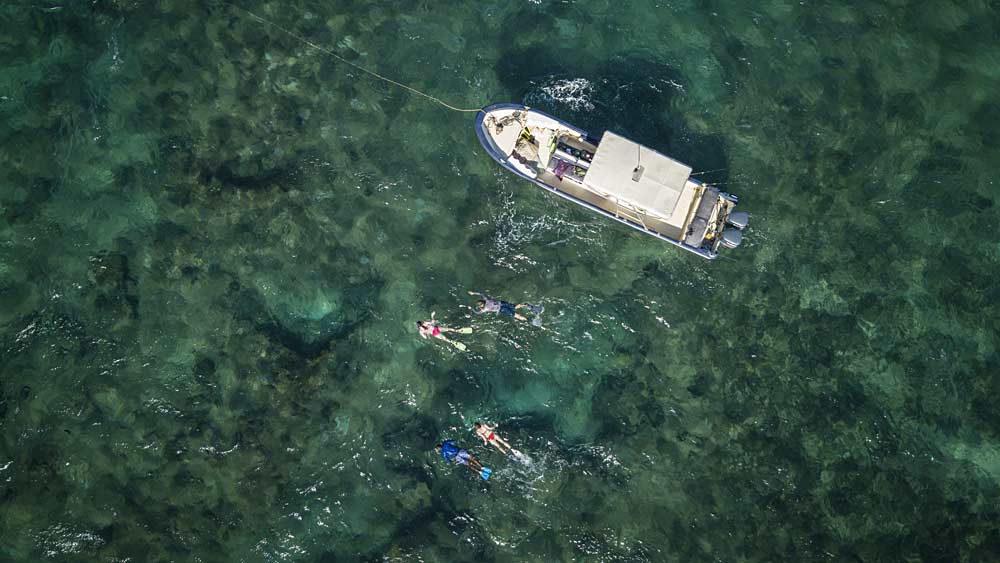
The best time for snorkelling over the reef is two hours either side of low tide, as this is the period when the greatest amount of marine life is revealed. Kenya’s coastal waters are warm all year round, so diving without a wet suit is also possible - and much more fun.
Realm of seabirds
The outer islands of the Reserve host many seabirds. Species nesting here include roseate tern, sooty gull, white-cheeked tern, bridled tern and brown node. Crab plovers are also plentiful while other migrant waders frequent the more sheltered flats and creeks.
Kiunga Marine Reserve: factfile
Climate: the coast is humid with a mean annual temperature ranging from 22-34 degrees centigrade. Rainfall is around 500mm per year.
Vegetation: microscopic marine plants and dugong grass, coastal scrubland and mangrove swamps.
When to go: the Kiunga Marine Reserve is open all year round.
What to take: footwear (to protect your feet from the reef), T-shirt, snorkel, mask, fins, camera, sunscreen and plenty of drinking water.
How to get there:
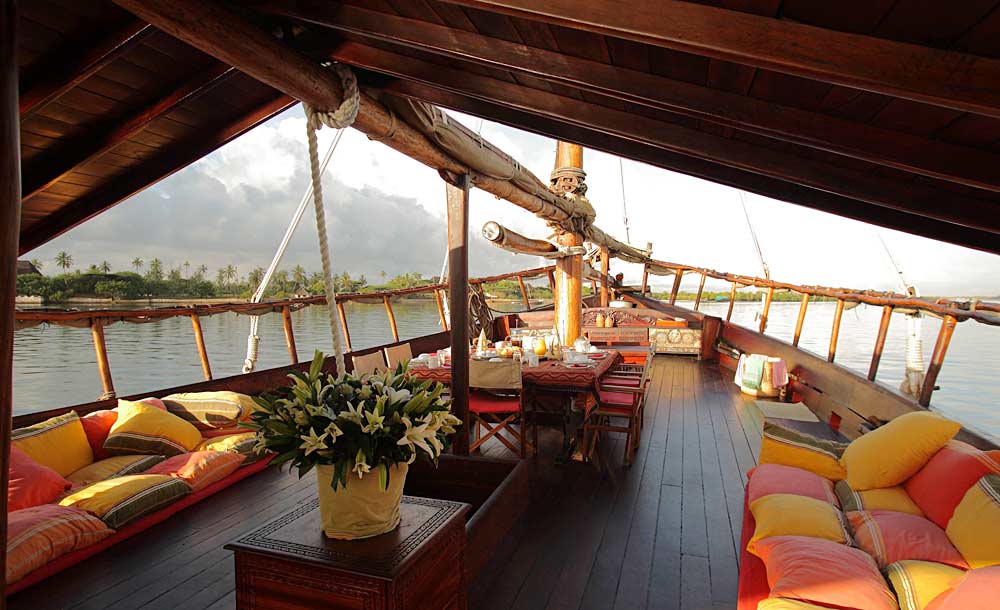
By road: Kiunga Marine Reserve is 976 km from Nairobi and 372km north of Malindi. Kiunga is a remote unspoilt village on the mainland about 150 km north-east of Lamu.
By sea: from Lamu you can get to Kiwayu Island by dhow or speedboat. The beautiful Tusitiri dhow can be privately booked via the Enasoit Collection website.
By air: there is a nearby airstrip at Mkokoni on the mainland.
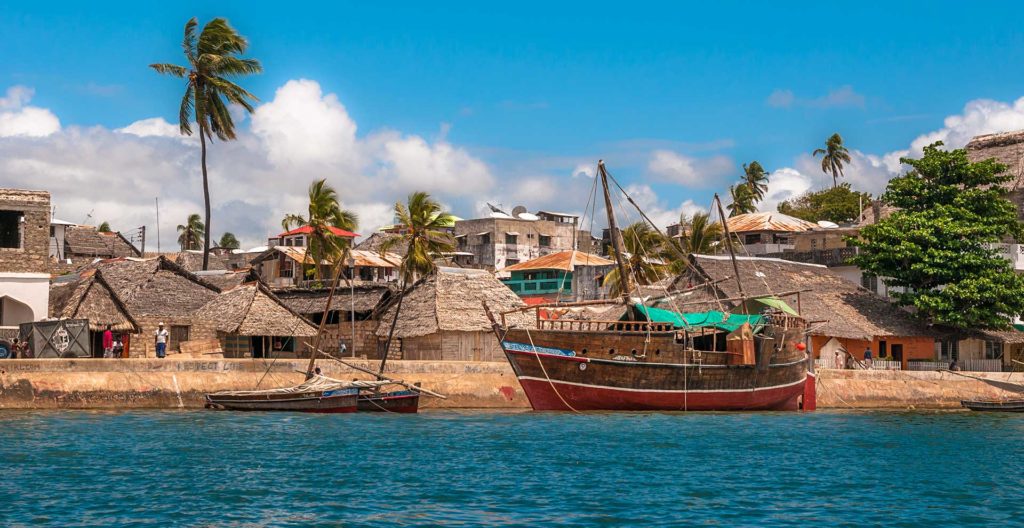
Things to do in Lamu
Lamu confounds. The most hardened of travel writers, the most extensively travelled of tourists are all rendered speechless by Lamu. It’s enchanting, unbelievable, spellbinding and addictive.

The Lamu Archipelago
The Lamu Archipelago is located in the Indian Ocean just off the northern coast of Kenya. It comprises five islands: Lamu Island, Pate Island, Manda Island and the smaller islands of Kiwayu and Manda Toto. The largest town in the archipelago is Lamu Town, on Lamu Island - its 'Old Town' is on the UNESCO World Heritage List.
Here's a taste of the many experiences on offer across the islands.
1. Take in the atmosphere of Lamu's Old Town
Established in the 12th century, Lamu is Kenya’s oldest continually inhabited town. Down the centuries it has been influenced by the Arabs, the Portuguese, the Omanis, the Germans, the Sultan of Zanzibar and the British. And a dash of all of these influences have remained: the result is an exotic mélange that is both unique and entrancing.
Today the town is a living monument to its past. The old houses are built with coral walls two-feet thick. They have a series of alcoves rather than rooms; and their size is decided by the length of the mangrove poles that are used for both floors and ceiling. Many are three-storeys high and feature winding staircases, vast carved doors, intricate fret-work screens, balconies and flat roofs.
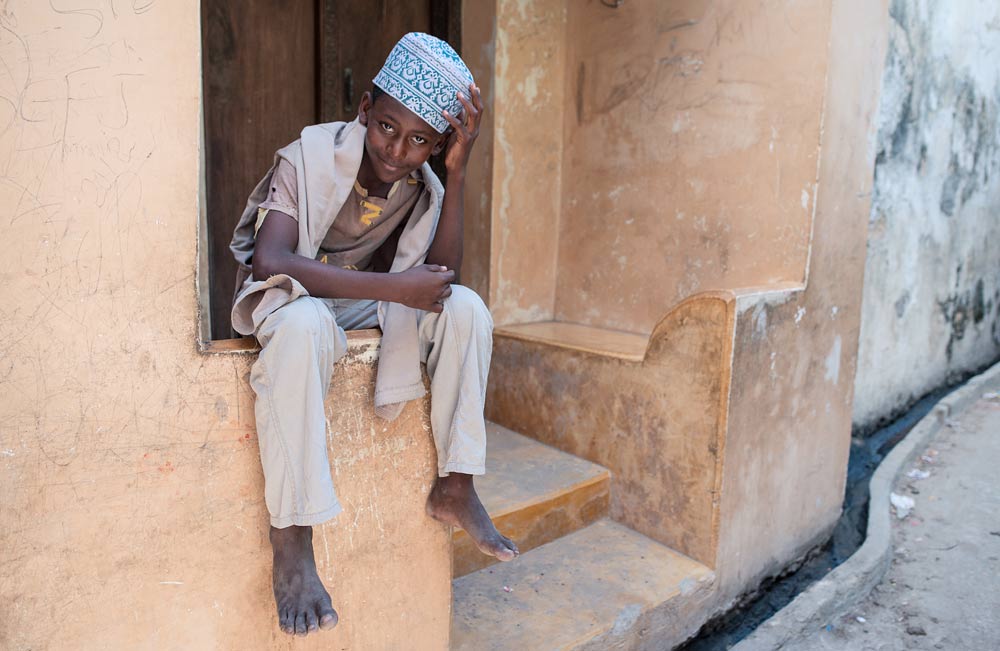
Lamu Old Town oozes Swahili culture: the ladies are veiled and the men wear wrap-around kikois. The children patter on bare feet through the alleys, and the old men gather to play dominoes in the crumbling medieval squares. The majority of the population are Muslims; and the town echoes to the call of the muezzin calling the faithful to prayer at the 23 mosques of the town.
2. Visit the cultural attractions in Lamu Town
Lamu Museum
Housed in a grand Swahili warehouse on the waterfront this dusty old museum provides an excellent insight into Swahili culture. There are some fascinating exhibitions an ancient Swahili artefacts, traditional boat-building, weddings, the famous Lamu door carvings and even silver jewellery.

Lamu Fort
Built by the Sultan of Pate in the 1800s, this squat castle holds the island’s library and Swahili poetry collection.
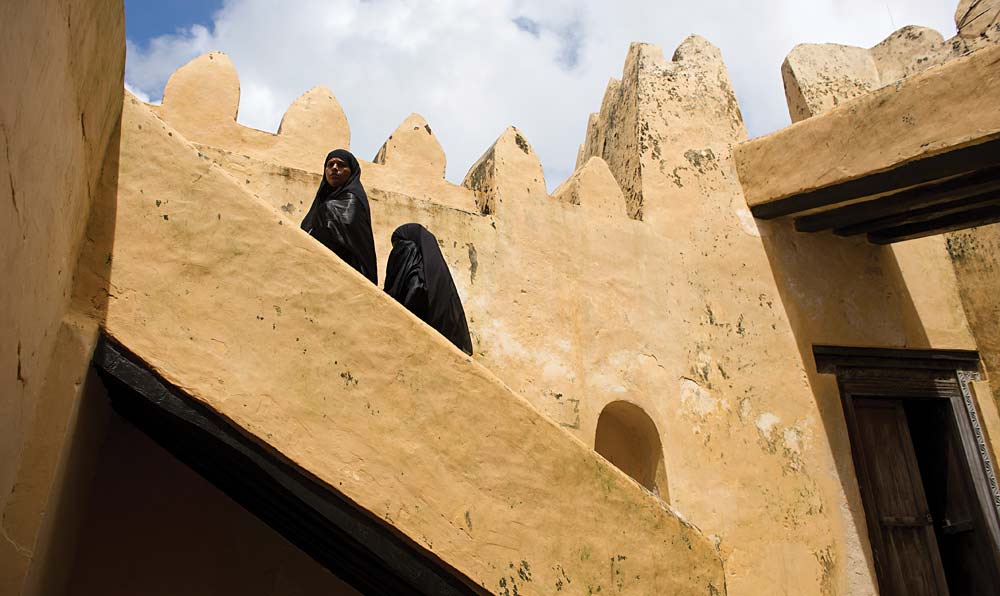
Lamu market
Atmospheric and chaotic this is the place to buy fresh fish, fruit, vegetables and spices. It is best visited in the early morning - be prepared to haggle.
Swahili House
Visit this perfectly preserved 16th-century mansion for the full-on flavour of Swahili life.
The German Post Office Museum
Built by the German East Africa Company in the late 1800s, this is now a photographic museum covering the brief period of German rule.
The Donkey Sanctuary
A man without a donkey IS a donkey or so says the Swahili proverb. Meanwhile, this sanctuary is devoted to giving shelter for some 3,000 donkeys that can no longer work.
3. Lie back and enjoy the beach life on Lamu Island
A place of clear blue waters and gorgeously tropical temperatures (30 degrees Celsius on average), Lamu is a water lover’s paradise. Choose from snorkeling, diving, numerous watersports and dhow trips to deserted sand spits. It’s also a great place for walking the dunes and beaches or camel riding.
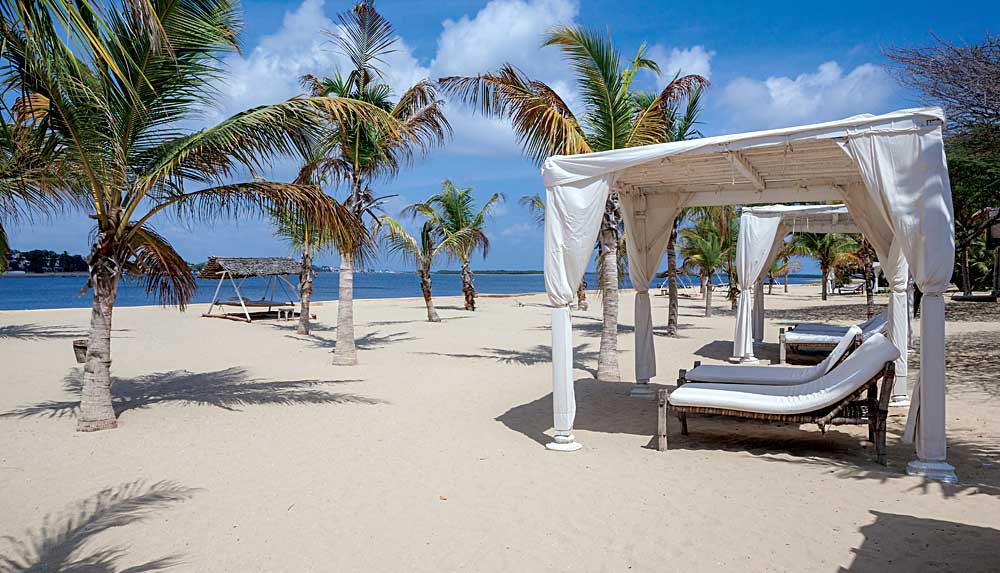
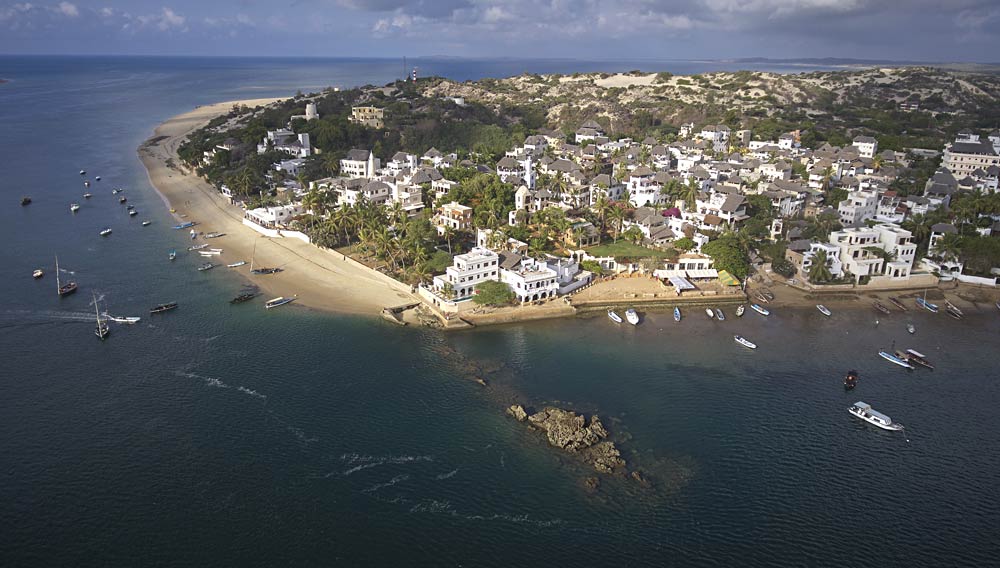
A few kilometres south of Lamu town is Shela - one of Lamu's fishing villages. It's an enchantingly pristine place with a stunning 12 km of beach, perfect for a stroll.
On the opposite side of Lamu island to Lamu town is the village of Kipungani. A place of dreamy beaches and the centre for dhow building and palm-mat weaving.
4. Take a boat trip to Lamu's neighbouring islands
Manda Island, Lamu
Manda Island is a short boat hop from Lamu. Here you will find dunes, mangroves and the fabulous Takwa Ruins, all that remains of a glorious 15th century city.
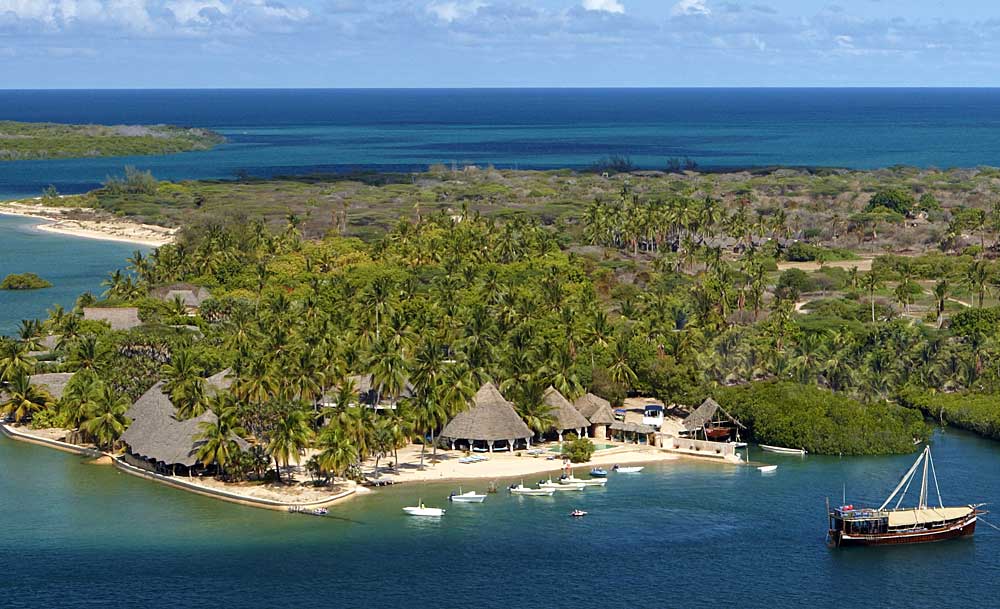
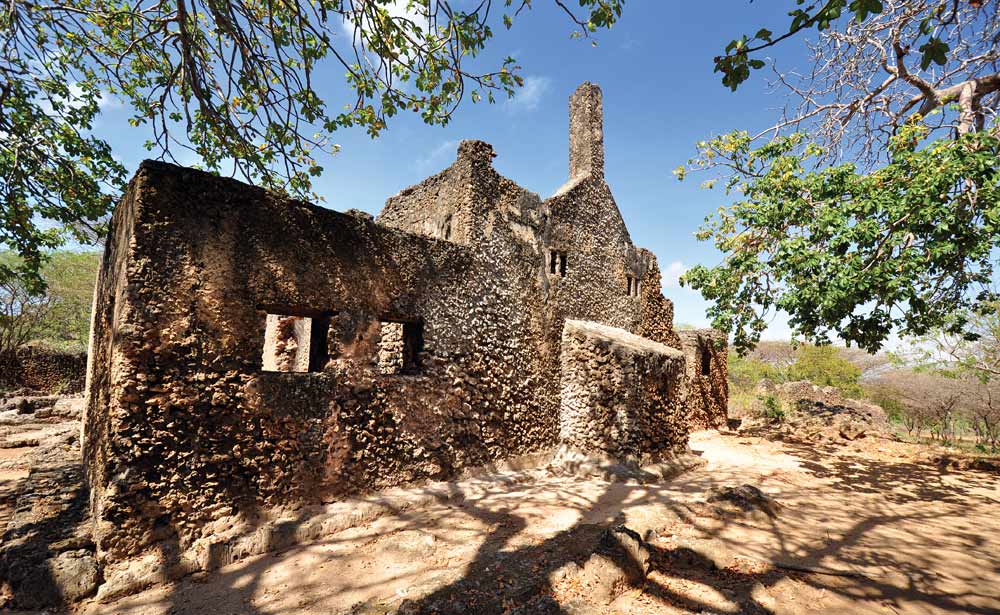
Pate Island, Lamu
Pate Island is a forgotten Swahili world. It is also the site of Shanga, the world’s most complete example of a medieval Swahili town.
Kiwayu Island, Lamu
Remote, pristine and romantic, Kiwayu lies at the far northeast of the archipelago and has a reputation for causing all its visitors to fall hopelessly in love.
The island is also ideally situated within the Kiunga Marine National Reserve. A pristine string of 51 rugged coral isles, ringed by rainbow coral reefs, Kiunga promises turtles, dugongs and an underwater world of unbelievable colour, discovery and vibrancy. It's the perfect place for a spot of snorkelling. To read more about the Kiunga Marine Reserve, click here.
5. Take part in one of Lamu's fabulous festivals

Lamu excels in festivals; the most famous is the Maulid, which features dhow races, donkey races, poetry, theatre, and an extravaganza of food. But there's also the Lamu Cultural Festival, an Art Festival and a Yoga Festival.
6. Hit the markets for some souvenir shopping
Lamu's unique buys include exquisitely hand-carved furniture, Arabian antiques, copper lanterns, hand-made jewellery, kikois and exotic fashions. A great place to start is Gallery Baraka, famous for its wide selection of tribal masks, hand woven textiles, elaborate beadwork and incised stone boxes.
7. Sample Swahili cuisine
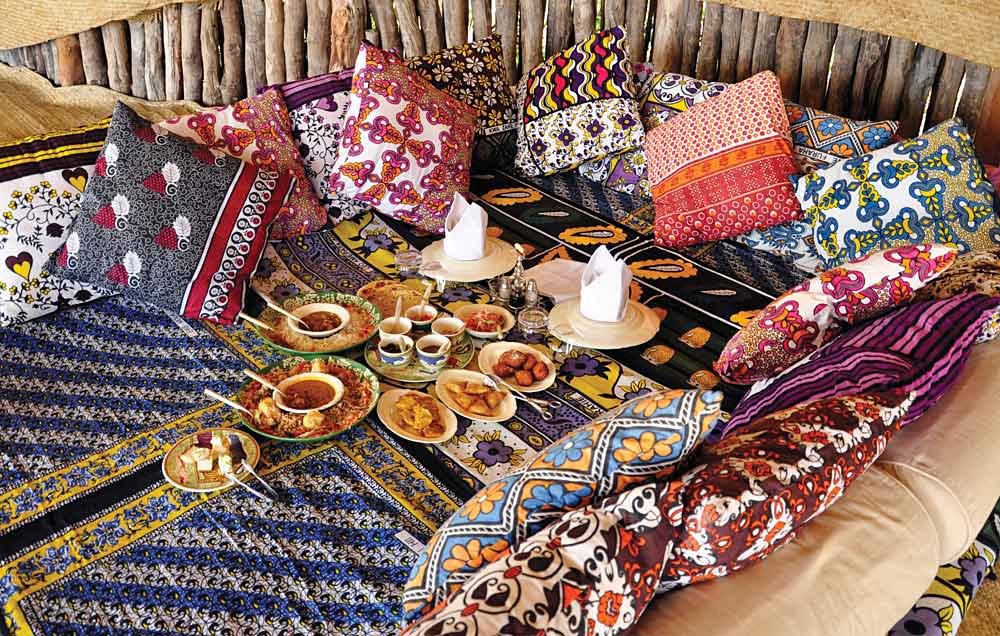
An extravagant fusion of Arabic and African, Swahili cuisine is a sublime blend of impossibly fresh fish, coconut, lime, spices and rice with plenty of fabulous fruit juices and spiced Arabic coffee.
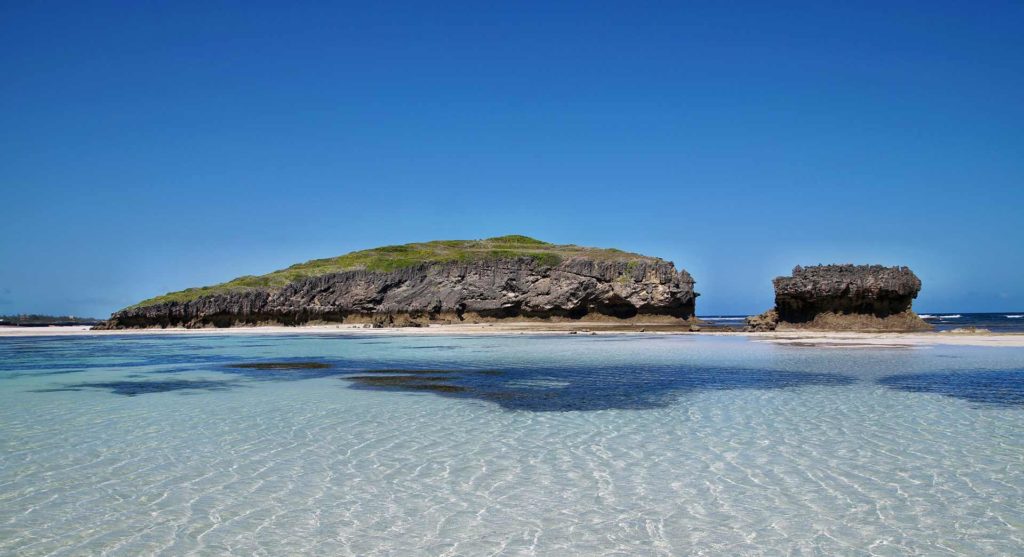
What to do in Watamu
Escapist, enchanting, and with an indefinable air of having time-warped itself back to gentler days, Watamu is one of Kenya's most popular beach destinations. Sheltered by the nurturing curve of Mida Creek, it abounds in rocky coves backed only by baobab trees; and shimmering lagoons fronted by great sweeps of silver sand. As well as boasting one of world's most beautiful beaches, Watamu offers visitors a wide-range of activities, unforgettable day-trips and a fascinating insight into Swahili life. Here are just a few suggestions.
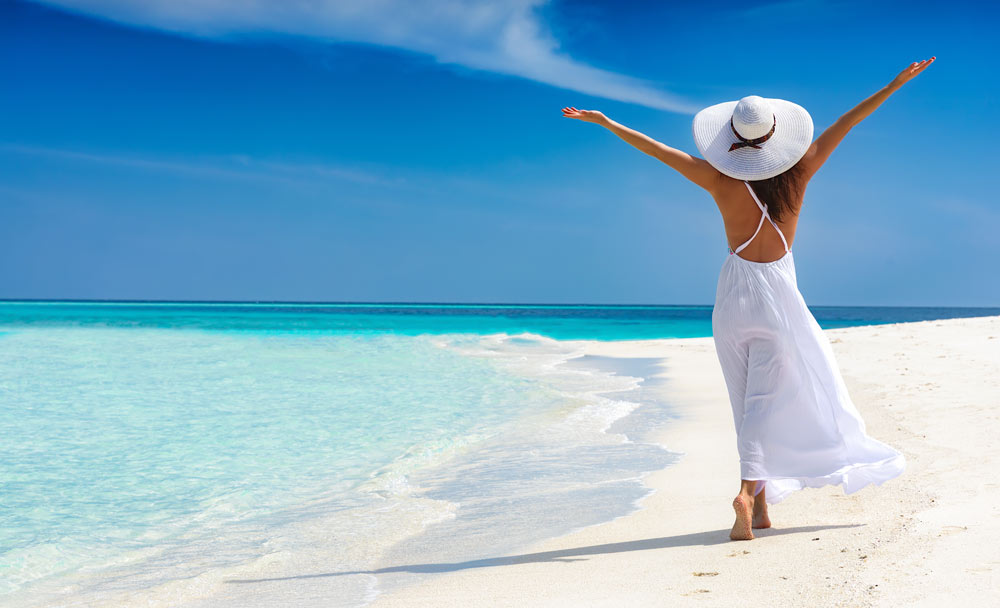
Explore Watamu village
In the village, there’s a cheery line-up of stalls displaying brilliantly-coloured fashions, local carvings and vibrant art. Elsewhere there are charming coffee shops, Italian gelato bars, delicatessens and bakeries. Fishermen sell fish fresh from the sea. The restaurants range from gourmet to simple roadside snack bar.
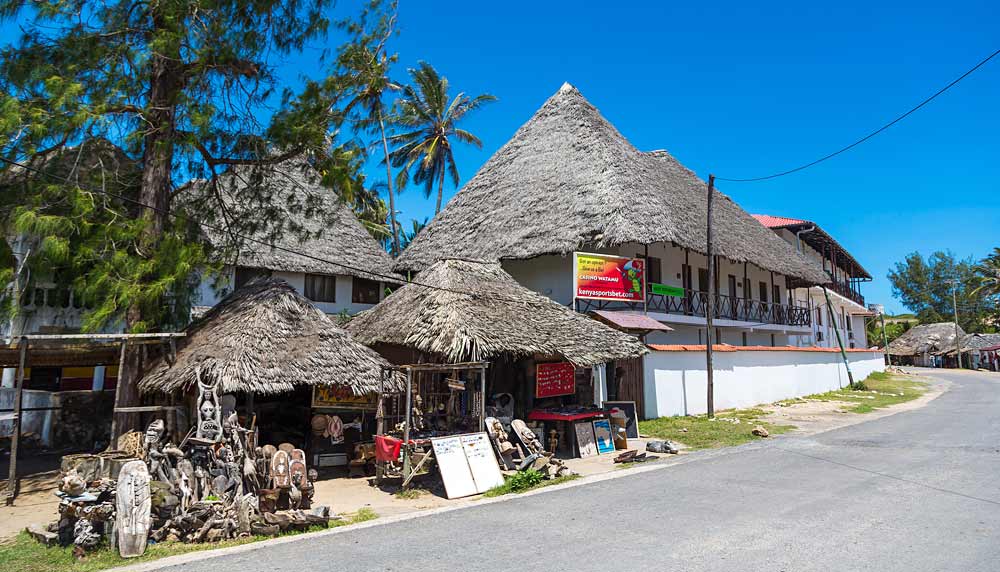
The clientele is cosmopolitan fusion. There are Italian and British residents; there are multi-cultural tourists; and there’s the welcoming mélange of the locals. And the happy-go-lucky, air of the place is epitomized by the fact that most people get around either by walking along the beach or taking a gaily-painted tuk tuk (motorcycle taxi).
Take a canoe ride through Mida Creek
According to Greek mythology, everything that ancient King Midas touched turned to gold. On the calm stretch of tidal water known as Mida Creek it’s the water that turns liquid gold as one of Kenya’s most stunning sunsets illuminates this secret domain of mangrove swamps and palm trees. For optimum immersion in the gold-painted early evening, take a spin on the creek in a traditional dugout canoe. Pole-propelled, it can nose its way into the mysterious forest of mangrove roots where ghost crabs flash briefly in the shallows, white egrets roost and grey herons stand as motionless as statues.
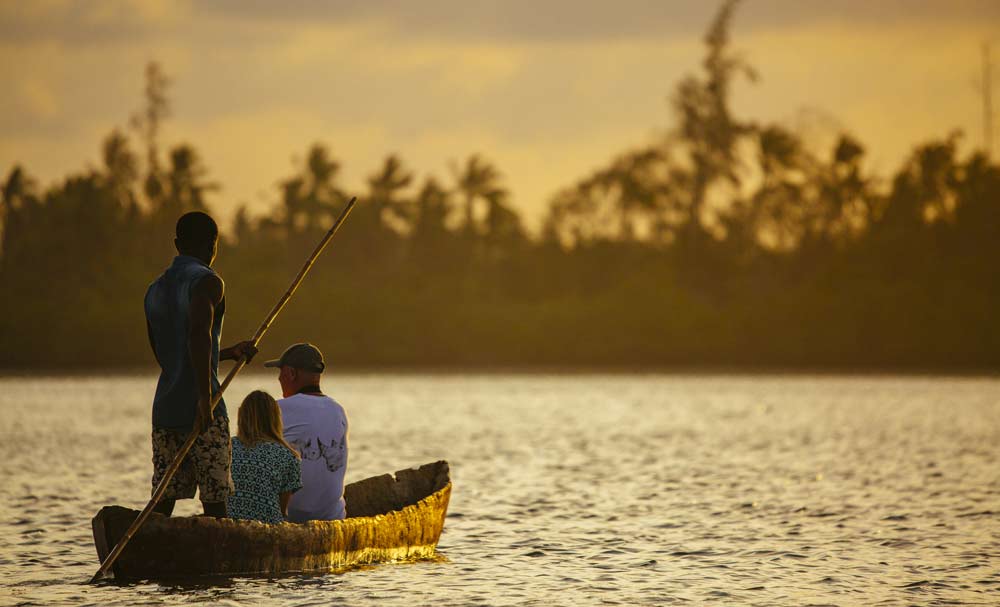
You’ll meet local fishermen - wading in the creek and crab-hunting with bows and arrows. You may even encounter the Mida rush-hour – a flurry of two or three little white boats packed with laughing local ladies and the odd surf board with a stool strapped on it – the paddler, more often than not, with his cell phone crammed to his ear.
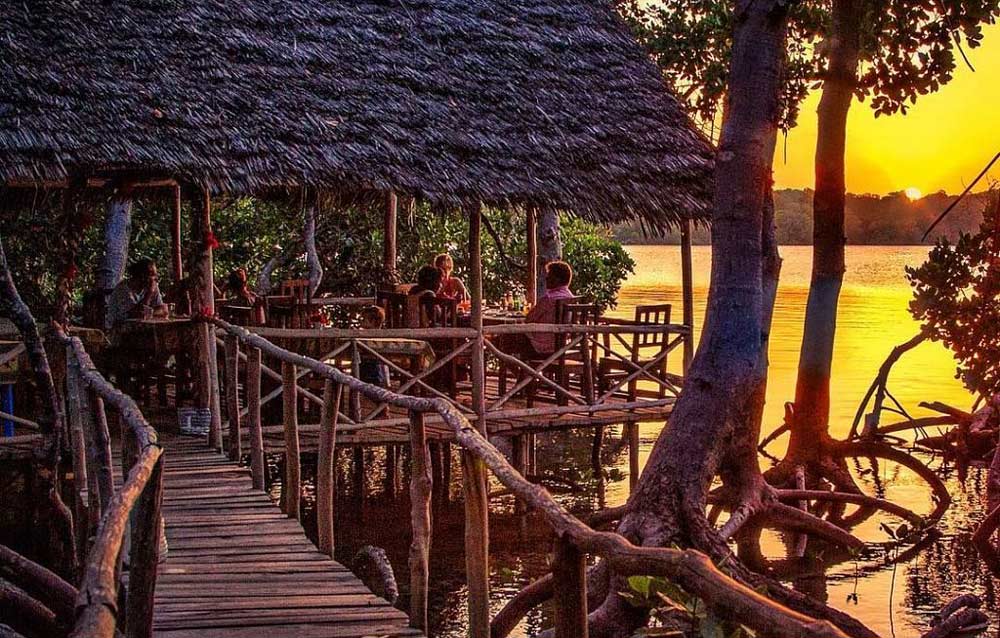
And as gold gives way to indigo, you can head into the community-run Crab Shack for cold beers and golden-fried crab samosas. The crabs are farmed in the mangrove swamps so they don’t come any fresher; and by sampling the Mida experience you’re supporting the local community. It’s gold-chip eco-tourism. For further information: ckahindi@rocketmail.com
Visit Bio-Ken Snake Farm
Fancy holding a four-foot cobra, and milking it for its venom? Then head for Bio-Ken Snake Farm, just five minutes from the centre of Watamu village. Housing the largest collection of snakes in East Africa, the farm is also a vital source of snake-bite serum. It also makes a great family outing boasting both scare-value and education alike.
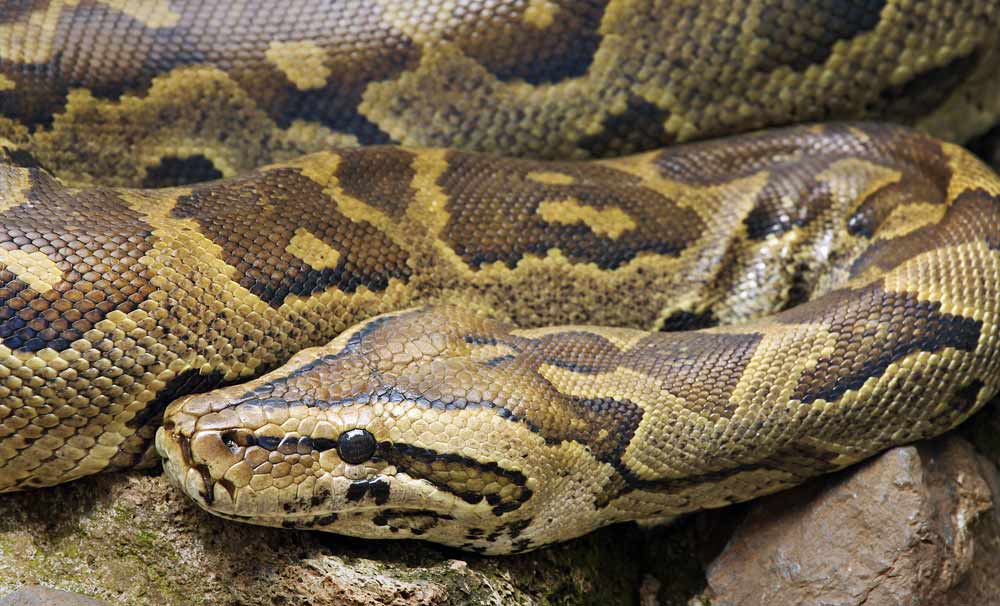
For the very brave, Bio-Ken also offers a range of 'Snake Safaris'. For further information: www.bio-ken.com
Take a tour of EcoWorld
On the sandy track that leads from Watamu to Mida Creek is a miracle. It’s called EcoWorld. And it’s deliciously inspirationally whacky. On one side of the road is an enormous pile of plastic refuse, on the other a stockade made of plastic flip-flop sandals. Venture inside and you enter the utterly surreal world of Watamu’s revolutionary recycling industry.
Fuelled by the refuse washed up on the beaches and by the vast amount of plastic and glass bottles generated by the local hotels, the EcoWorld team create everything from building construction blocks (plastic bottles filled with sand), bottle-bottom bricks, art made from washed-up toothbrushes - to toys made from recycled flip-flops, charcoal made from crushed coconut shells and cooking gas made from rotting vegetables.

But the miracle doesn’t stop there – the Watamu Marine Association's ‘Blue Team’ keep the beaches clean, the local hotels cook on the methane gas generated by their own kitchen waste, and the compost left over from the bio-gas generators grows luxuriant bunches of basil which fuel the local pizzas. An award-winning, benchmark-setting and superbly-symbiotic relationship between local community and tourism industry, the EcoWorld model is so successful that it’s being mirrored all over Kenya and the world. Visitors are welcome and the gift shop (itself constructed entirely from bottles) is a treasure trove of ecologically-sound gifts.
For further information, visit the EcoWorld Facebook page.
Spend a day big game fishing in the Indian Ocean
When it comes to big game fishing, Watamu is Mecca. Moored in the blue-green waters of the glorious bay is a stunning selection of double-tier fishing boats. They are festooned with huge rods, each of which is custom-designed to reel in the REALLY big fish, such as marlin, wahoo and sailfish. It’s mostly tag-and-release fishing, though hotels such as the iconic Hemingways do catch their own fish and serve them up superbly fresh in their restaurant. As to when to go – that really depends on which fish you’re after – but for professional advice you can do no better than contact the African Billfish Foundation: http://africanbillfish.org.

Help save the turtles of Watamu
The beaches of Watamu are a favourite nesting site for green, hawksbill, olive ridley and leatherback turtles. Local Ocean's Watamu Turtle Watch monitors 50-60 nests per year in the area, not only to shepherd the baby turtles down to the beach, but also to rescue large turtles caught in the fishermen’s nets. The best time to see turtle hatching is between March and October.
To read the full article about saving Kenya's sea turtles, click here.
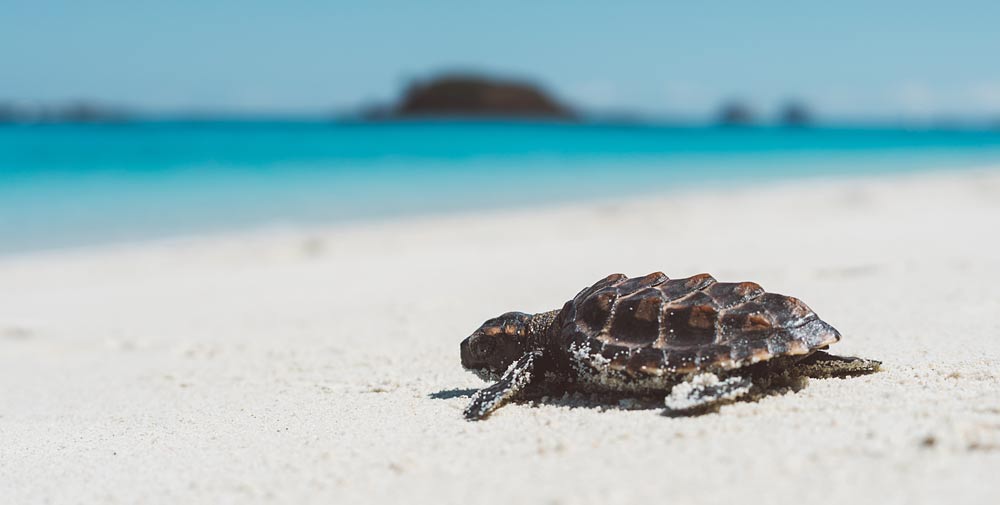
To visit the rehabilitation centre, or discover how you can adopt a turtle or beach nest, visit: https://localocean.co
Paddle board with the dolphins of Watamu
Watamu is famous for its dolphins (Indo-Pacific bottlenose, Indo-Pacific humpback and spinner). Returning year after year to the sanctuary of Watamu, mothers arrive with their calves and males arrive to mate. What’s more, the regulars have been carefully catalogued according to their very personalized fin markings. This gives the dolphin spotting tours an added dimension.
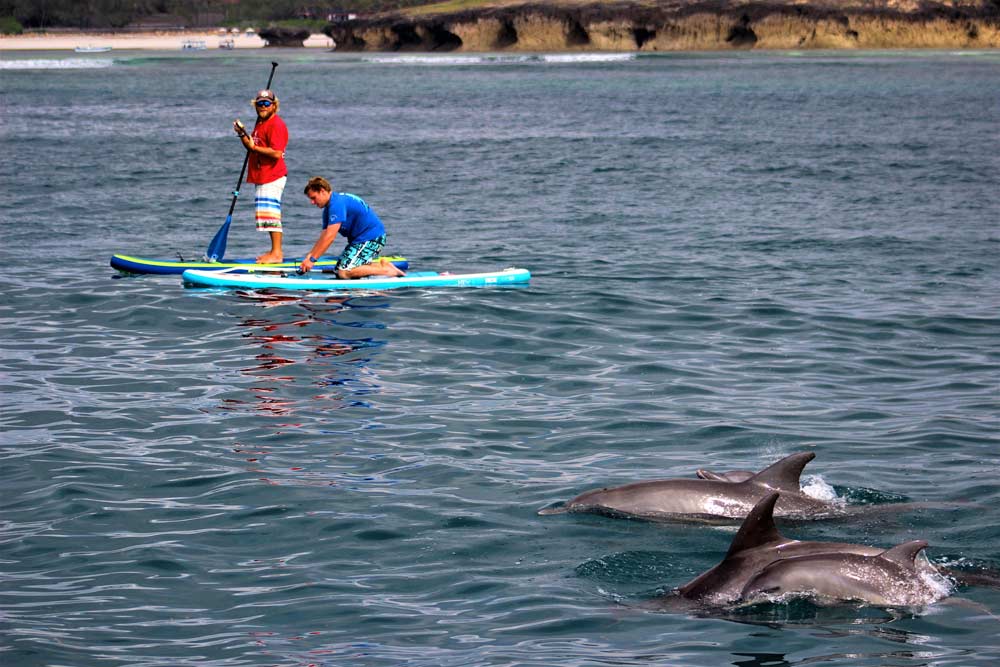
You can also enjoy the rare treat of stand-up paddle boarding with dolphins. For more information: www.tribe-watersports.com
Go SCUBA diving...
It’s a tribute to the brilliance of the Watamu dive experience that people come back year after year. One visitor admitted to having done 750 dives off Watamu with Turtle Bay Dive Centre (www.watamudivecenter.com). When asked what made him such an unshakeable devotee of Watamu diving, he said it was a mix of friendly dive-guides and year-round clear, warm water. He also raved about the great selection of 20 world-class dive profiles ranging from cliffs, drop-offs, night dives and wreck dives. Also good to know is that, whether you’re learning or pro, Watamu boasts some exceptionally professional dive-schools. So… dive in.
...or swim with whale sharks
Given that they’re the size of a double-decker bus, a whale-sighting is a perspective-changing experience. And in Watamu, such sightings are commonplace, not least because the whale-spotting teams liaise to circulate information as to where the whales are at any given time. Migratory pods of humpback whales pass by from Southern Africa typically between July and September.
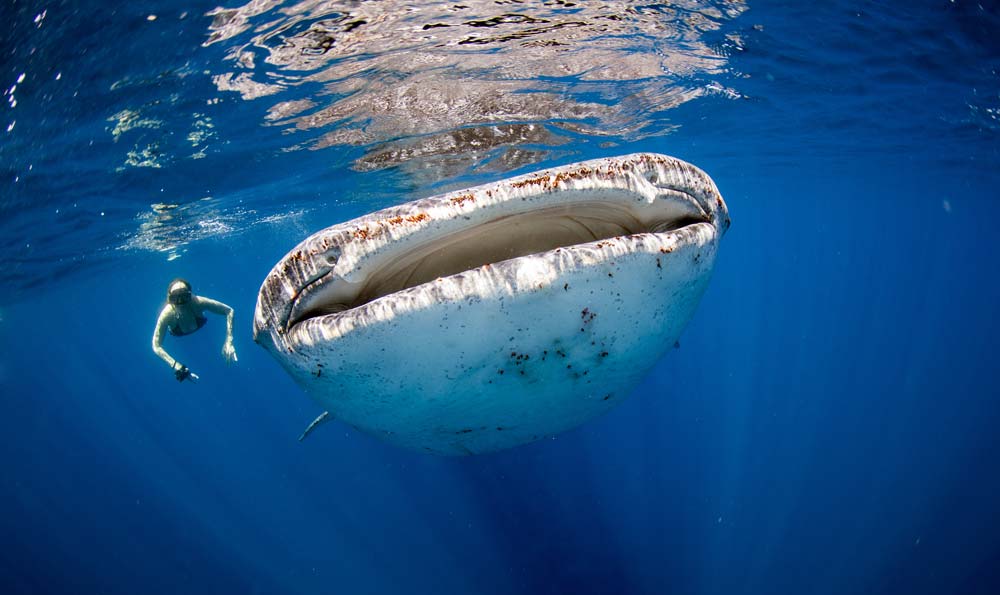
Meanwhile, the prime whale shark season is usually September to December when you can snorkel alongside these gentle giants. But whales are often seen at other times of the year too. Nor do you have to go out on a boat to see these gentle giants – they often ‘breach’ right off the headland – so you can see them from the beach bar.
Marvel at the magic of Watamu Marine Park
An inspirational water world, Watamu National Marine Park and Reserve showcases the entire water-sports spectrum to perfection. There's kitesurfing, paddle-boarding, boogie-boarding, snorkeling, sailing – the lot. It also boasts a glorious coral reef. Here you'll find 150 species of coral, 1000 species of reef fish and both sea turtle feeding and breeding sites. You can also expect the additional lure of sightings of manta rays, grouper and barracuda in the deeper waters.
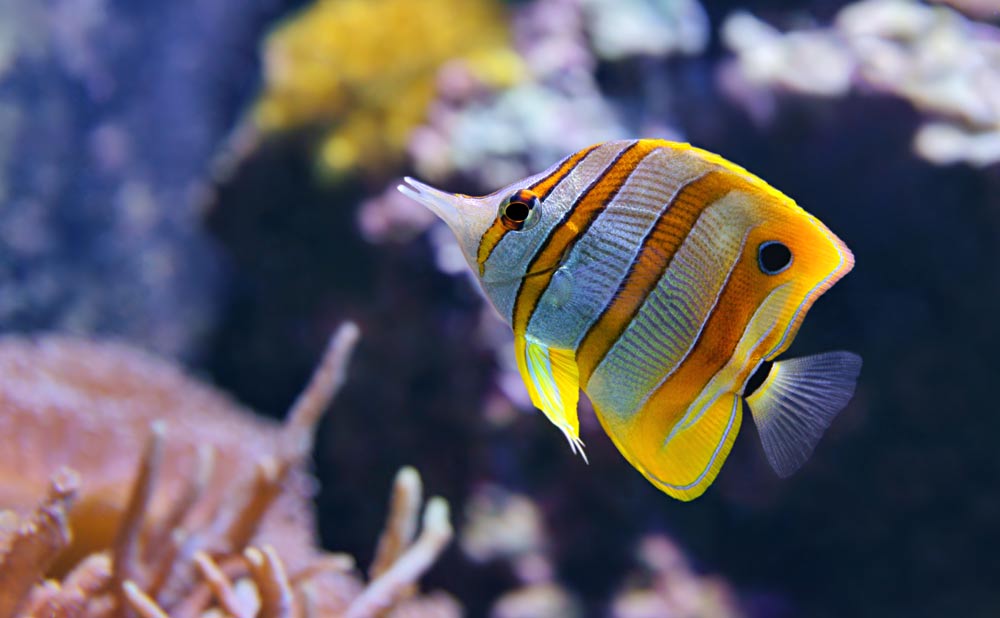
Find haunted cities and magical culture
Watamu’s history is long and venerable. The vast city of Gedi, now a national monument, was first settled by Arab traders around the 12th century and not abandoned until the 16th century. Then, or so legend has it, everyone left virtually overnight, scattering their treasures as they ran.
But Gedi is not the only remainder of a forgotten civilization because on Temple Point, ringed by ancient baobabs, stands a ruined mosque. And there are more ruins on the utterly unspoilt and rarely visited island of Kirepwe, which lies on the far side of Mida Creek.
Read the full article on Gedi Ruins.
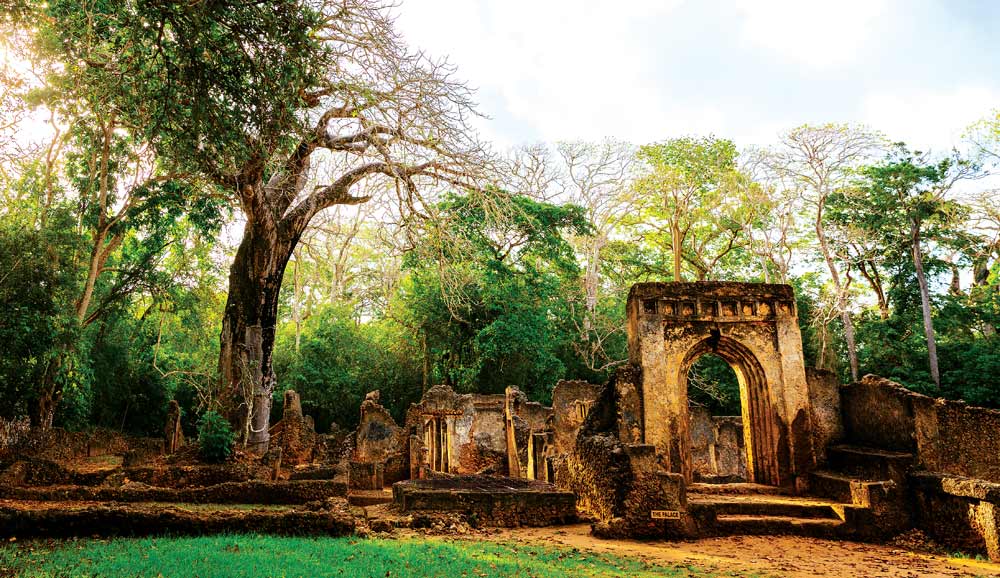
Need to know
Getting there: It couldn’t be easier. Watamu is a scenic 95 km drive from Mombasa, or a short flight from Nairobi to nearby Malindi (Air Kenya, Fly 540, Jambo Jet and Kenya Airways).
Where to stay: Watamu has it all: 5 star resorts, family resorts, eco resorts, apartments, simple guest houses and safe and secure camping.
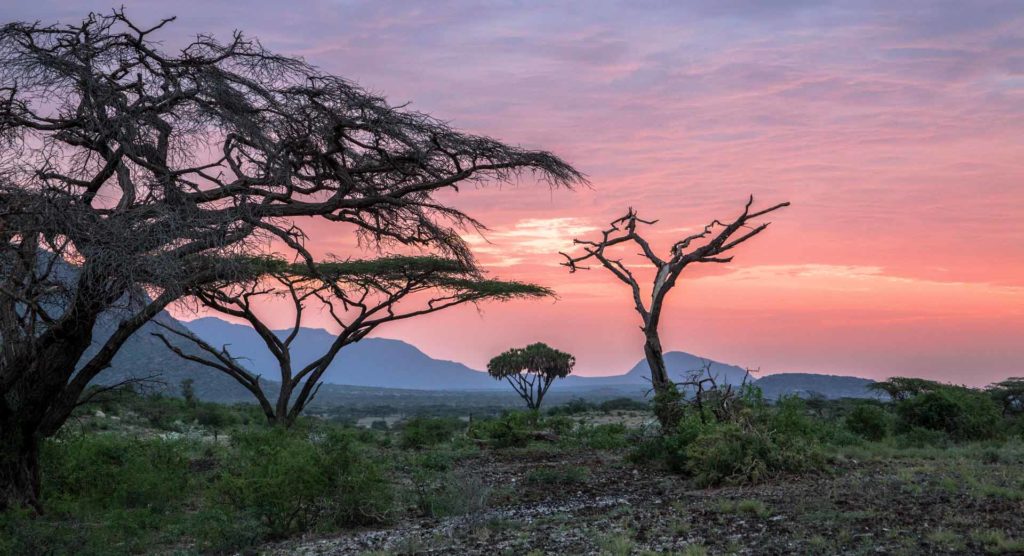
Sundowners in Shaba National Reserve
There's no better way to learn about the fascinating culture of the Samburu people than sitting down and chatting with warrior. And even better if it happens to be over a glass of chilled wine while watching the sun set and the elephants wade across the Ewaso Nyiro River in Shaba National Reserve.
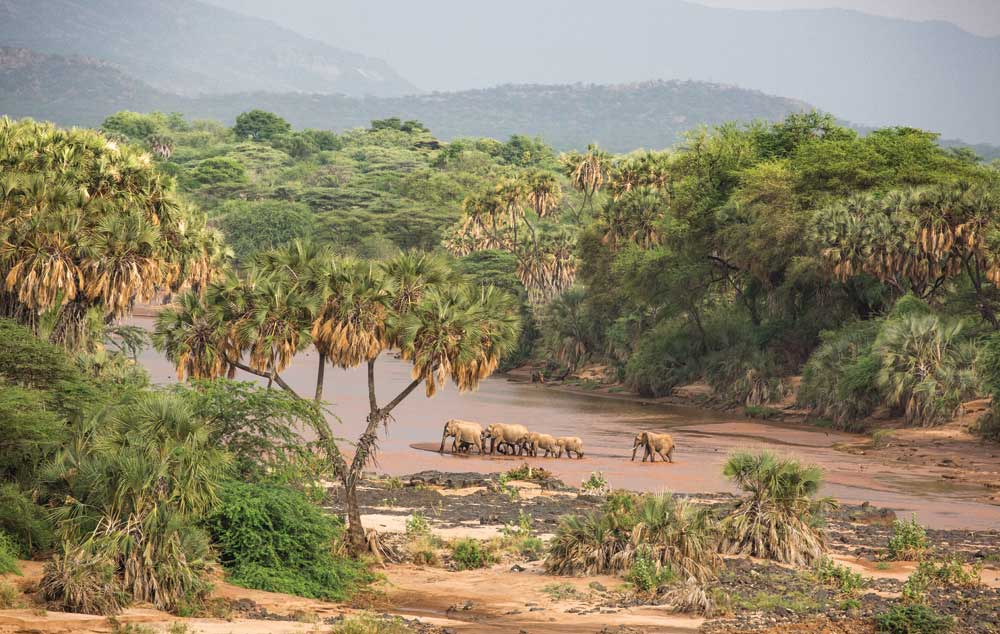
Night falls in Shaba National Reserve
The light is fading from grey to lilac and the baboons are streaming down to the riverbank. It’s their bedtime and they’re swarming up the trunks of the doum palms to lay claim to the best forks in the branches. Like all children, the young baboons resist the onset of bedtime. They’re chasing each other around the huge boulders that line the Ewaso Nyiro River. A tiny creature, all pink face and brown fluff, tumbles off the edge of a rock the size of a giant’s billiard ball. Quick as a flash, another hand is extended. The infant dangles briefly and is hauled back to safety. From the doum palms comes a cackle of maternal alarm.

We set up our sundowner camp
On the other side of the river we’ve set up camp for ‘sundowners.’ We’re on a natural beach, on a bend in the river. It’s a sublime spot, backed by surreally sculptured boulders. Better still, it delivers long views down the cocoa-brown river. The sundowner tradition dates back to the time of the great game-hunting safaris of the 1900s. Then, European royalty and American wealth streamed to Kenya to hunt the ‘Big Five’; now the hunting culture is dead and gone. But the Samburu culture, immeasurably more ancient and profound, lives on.
And one of its sons is sitting with us.

Clad in brilliant colours and embellished with bandoliers of beads, Lejale has guided us on our travels through the painted deserts of northern Kenya. Now, as the thick brown river slips silently past and the baboons melt into the shadows, he deems it time to deliver his Cultural Talk. Well, why not?
The Samburu talk fast
And so he begins with the tale of how the brother-tribes of the Maasai, Njemps, Samburu and Laikipia migrated to Kenya from Southern Sudan some time in the 17th century. He tells us how the Laikipia elected to remain on the flanks of Mount Kenya while the other three tribes pushed on for warmer climes. It was a bad decision: their cattle died and they were reduced to pursuing their former clansmen and raiding their cattle. ‘But,’ declaims Lejale, arms extended like some prophet descended from the mountain, ‘they were defeated and now the people once known as the Laikipia are no more. Which leaves only the Njemps, who settled around the shores of Lake Baringo, and the Maasai and the Samburu.’ He glances at us, struck by a thought. ‘Do you know how to tell the difference between a Maasai and a Samburu?’ he asks.
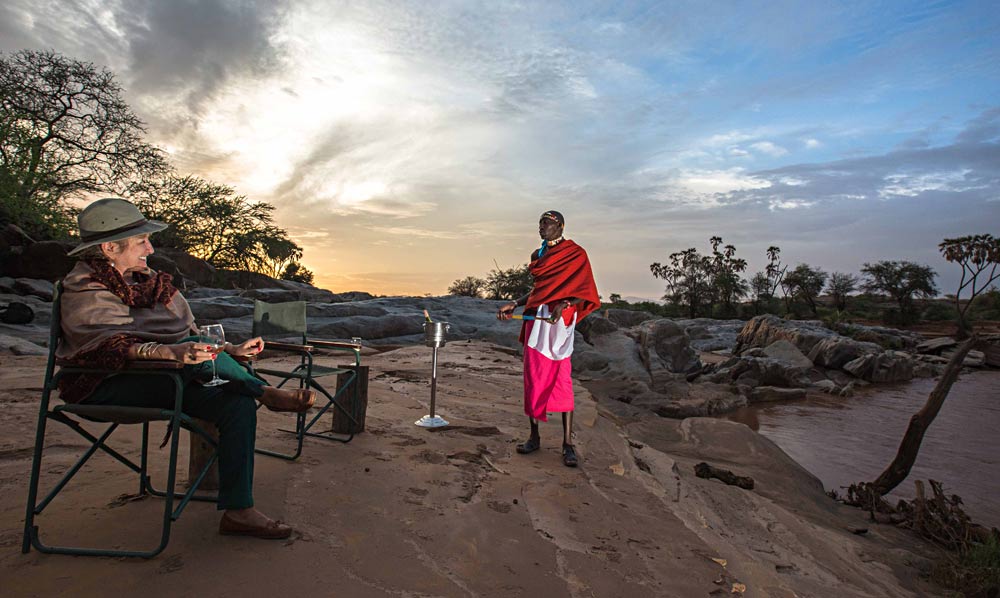
We don’t. The answer is complex involving subtle nuances of hairstyle and headdress and arcane placements of knives in belts. Sensing our confusion, Lejale condenses matters. ‘The Maasai talk slowly,’ he says, ‘the Samburu talk fast’.
And this seems to settle things. For him at least.
The rites of passage of the Samburu
We move on to study the rituals of circumcision and coming of age. They’re fascinating but convoluted and eventually boil down to the fact that everything rests on the twin tenets of respect and bravery. An entire family will, for instance, be irretrievably disgraced if a would-be warrior shows fear in the face of the circumcision knife. But happy are those who come through this ordeal unscathed. Admitted to the sacred ranks of warrior-hood, they will enjoy white robes of triumph, magnificent feathered headdresses and lilting lines of undulating maidens.
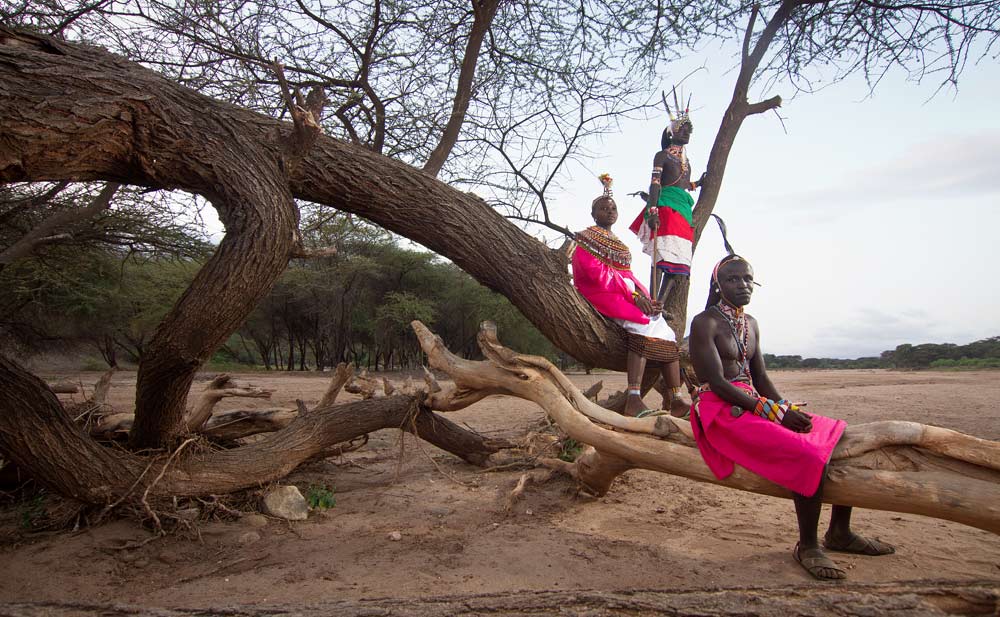
As the wine sinks in the bottle, we turn briefly to the mathematics of barter. We learn that, roughly speaking, one camel = 24 goats, one heifer = twelve goats, one male calf = three goats. Which firmly establishes goats as the common currency of Samburu-land. But now the light is dimming and far behind us rises the great bulk of Ololokwe, the Sacred Mountain of the Samburu. A massive flat-topped mesa that glowers over the landscape, this is the home of the Samburu God, Enkai.
Enkai: the god of the Samburu
‘If Enkai is not shown respect,’ announces Lejale ‘then the Samburu believe that drought will follow. And then our livestock will die and we will perish.’ He leans on his spear. ‘In times of drought, the married women must intercede. Because Enkai listens only to them.’ We gaze at him enquiringly.
‘The married women,’ Lejale says, ‘take up their sacred sticks and set off, singing and dancing as they go, to the foot of the mountain. There, they pour milk and water into the earth and Enkai listens.’
There’s a rumble of thunder downstream. The northern lands have been deluged with rain over the last few days. It’s rare. Typically this land is parched all year round. The songs of the married women must have been particularly lovely this year.
Across the river, we can just make out the hunched shapes of the baboons high in the forks of the palms. The world is midnight blue. It’s time to go home. But, like all good lecturers, Lejale invites final questions. ‘How have the Samburu adapted to modern life?’ we ask. ‘They have not,’ he says simply, ‘why should they?’ ‘Don’t they want the things that modern life can give?’ we suggest. Lejale looks pityingly at us. ‘What they want,’ he says, ‘is goats, camels, cows and sheep.’ ‘What about televisions?’ ‘What use are televisions?’ says Lejale with scorn; ‘there’s no electricity in the village.’
Samburu culture past and present
‘But, don’t your people want to know what’s going on in the world?’ we pursue. The question sounds lame even to us. ‘Don’t they want to know about…’ we hunt for a topic of global relevance, ‘what President Trump is saying, for instance?’ Lejale smiles. ‘Most Samburu don’t know President Trump exists,’ he says benignly. ‘So what does matter to you?’ we persevere. Silhouetted against the silent brown river, Lejale considers.
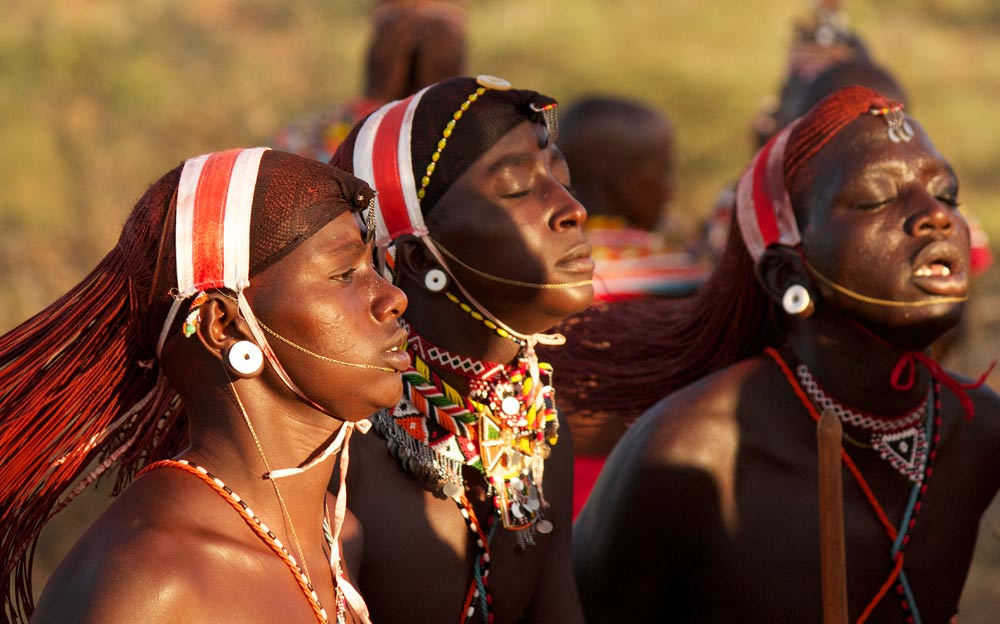
‘Mobile phones and motorbikes,’ he concedes, ‘education and culture’. At the mention of culture, his chin goes up. ‘It is thanks to our culture, that there is virtually no crime in Samburu land,’ he says, ‘and that the old and sick are always cared for. And it is out of respect for our culture that we share all that we have for the communal good.’ The inference is obvious. President Trump hasn’t a hope. As we pack up the chairs and grope our way back to the vehicle there’s one more question to be asked.
‘And what about you, Lejale? What’s your goal in life?’
‘I,’ says Lejale, ‘would like to be a politician.’
Shaba National Reserve: Need to know
Shaba National Reserve lies in northern Kenya, close to Samburu and Buffalo Springs National Reserves. Well off the beaten tourist track, it makes a magnificent backdrop to a very special sundowner experience.
This story took place on the banks of the Ewaso Nyiro River. Sundowners were organized by Sarova Shaba Game Lodge, who also provided our accommodation and our guides. Lejale is the lodge’s cultural attaché. He is also an inspired game tracker.
The Sarova Shaba Game Lodge stands central to the three northern national reserves of Shaba, Samburu and Buffalo Springs. For further information: www.sarovahotels.com.
We travelled to Kenya’s arid north flying with Safarilink who offer daily flights to the region. For further details contact: www.flysafarilink.com

What to see and do around Lake Nakuru
In this feature we discover some of the things to see and do around Lake Nakuru, outside the National Park. Close to the Lake there are a number of interesting prehistoric sites and also one of the world's largest volcanic calderas.
Hyrax Hill
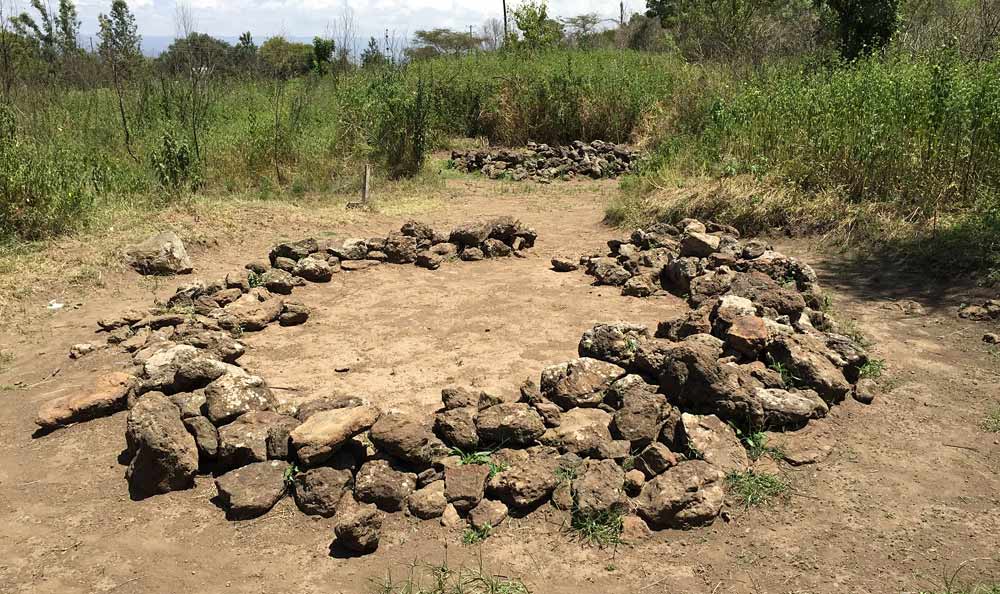
Overlooking the lake, just 3.5kms out of Nakuru town heading in the direction of Nairobi, is the prehistoric site of Hyrax Hill. It is named after the hundreds of rock hyrax that once scampered here. This is a Neolithic seasonal settlement that goes back some 5,000-6,000 years and is liberally littered with the assorted relics of man, from hand-axes to clay pipes.
The Hyrax Hill site was discovered in 1926 by the famous palaeontologist, Louis Leakey and excavated between 1937 and 1938 by Mary Leakey. The site shows two separate areas of occupation: one from the Pastoral Neolithic and late Iron Age periods, and one from the early Iron Age.
Some of the most evocative remains that can be seen here are the ancient ‘Bao’ boards. These were carved into the rocks by our far-distant ancestors and can still be played upon today. ‘Bao’ is a board game that involves the movement of seeds or small stones around a series of hollows. The hollows represent cattle encampments (Bomas) or captured herds.
The site is open daily 9.30am to 6pm, fees are payable upon entry. Further details can be obtained from the National Museums of Kenya.
Menengai Crater
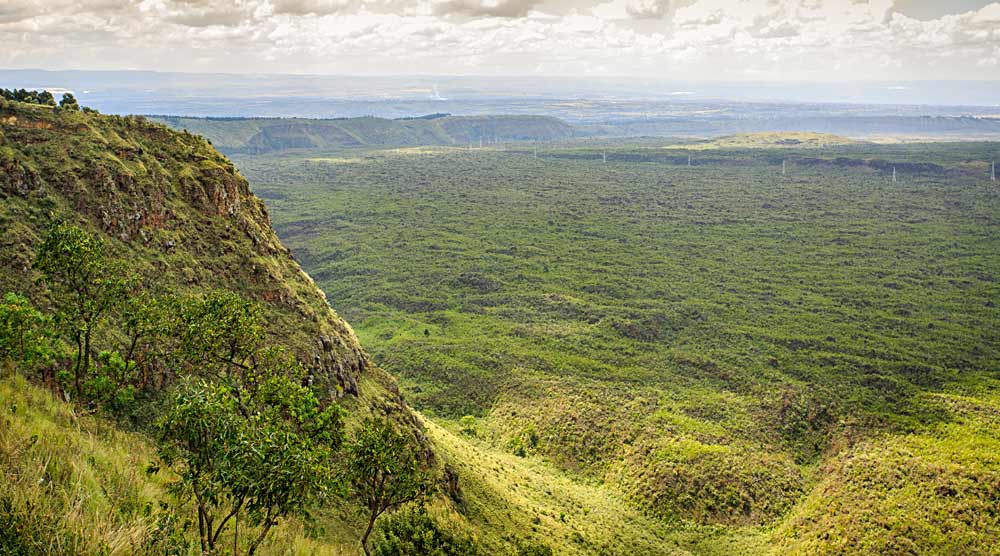
North of Lake Nakuru rise the massive grey ramparts of the Menengai Crater. The crater has a diameter of around 12 km and a depth of around 500 m. This makes it the second largest volcanic caldera in Africa. The crater was the scene of a famous battle between warring Maasai clans in the 19th century. And its eerily petrified waves of lava and towering volcanic walls are still believed to be haunted by the tormented souls of the thousands of vanquished Maasai ‘Morans’ who were hurled to their deaths from its rim.
The Crater is surrounded by lush forest of eucalyptus and acacia and is an ideal spot for hiking, nature walks and picnics. The view from the rim of Lake Nakuru and Lake Bogoria is awe-inspiring. As far as the wildlife goes, you can expect to see: tree hyrax and rock hyrax; Kirk’s dik dik; slender mongoose; black-faced vervet monkey; olive baboon; and mountain reedbuck. The bird-life is equally impressive - home to Verreaux's eagle, lesser spotted eagle, Abyssinian ground hornbill and the African Marsh Harrier.
Getting there: Head out of Nakuru on the A104 in the direction of Nairobi. look for a road on the outskirts called, Menengai Drive. Take the fourth turning on the left off Menengai Drive (Crater Climb). Some 4.5 kms up the hill you will see a campsite followed by a telecommunications tower. Head for the tower then turn right along a path that leads through the remnants of the forest to the edge of the crater.
Entry is free and the crater is accessible during daylight hours. It is not recommended that you visit after dark or alone.
Kariandusi Prehistoric Site
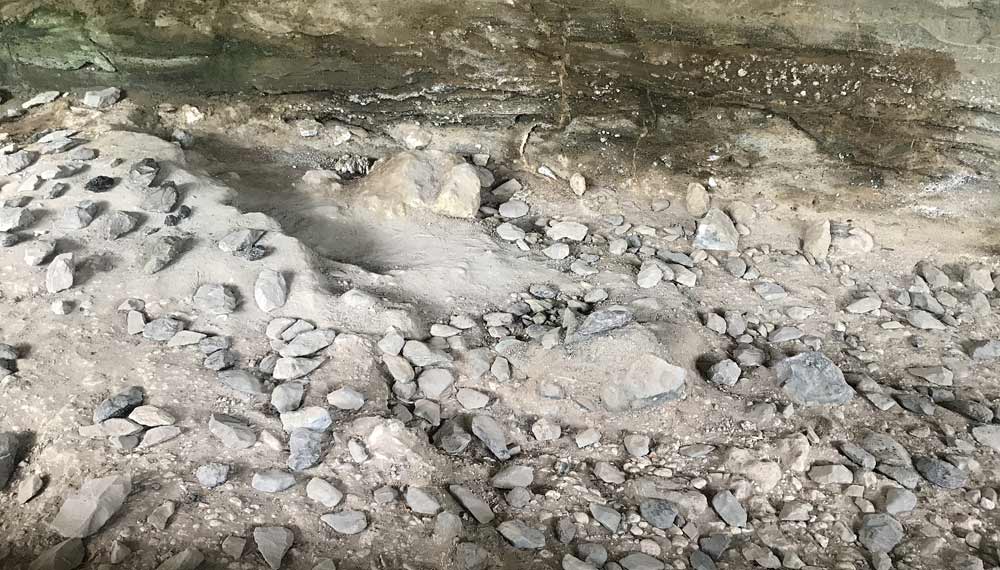
The Kariandusi prehistoric site is situated further along the A104, heading out of Nakuru towards Nairobi. Discovered in 1928 by Louis Leakey, it features a museum and two excavated sites and is believed to date back to the Acheulean period (between 1.5 million and 200,000 years ago). Studies suggest that this was a prehistoric workshop rather than a place of permanent dwelling as it is strewn with stone hand axes and cleavers made from obsidian, a vitreous black volcanic rock.
The museum is open daily 8am to 6pm, fees are payable upon entry. For further information contact the National Museums of Kenya.
Want Inspiration in your Inbox?
Sign up for FREE to receive our monthly e-newsletter with features
and ideas to help you plan your Kenyan adventure
© 2025 Kenya Holidays
